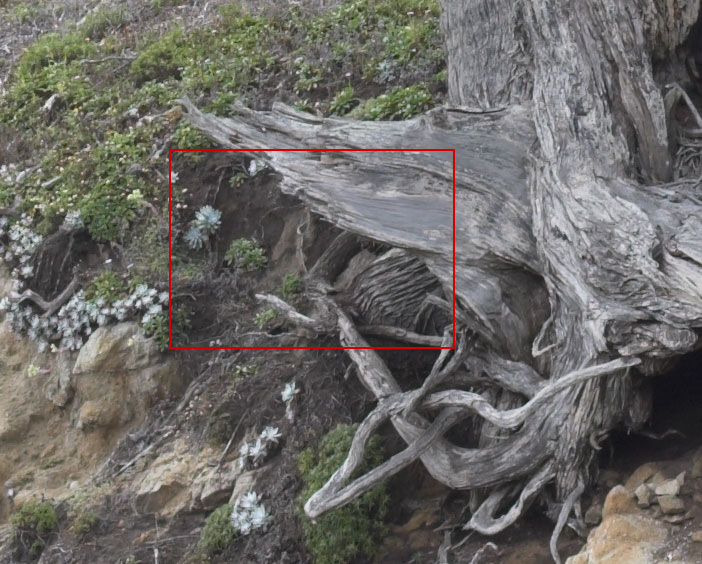
|
Introduction
There is no doubt that when compared to 4x5 the Canon 1DsMk2 does not provide quite the resolution of scanned 4x5 film. That much was made clear in my 4x5 and Canon 1DsMk2 comparative essay. However, how does the 1DsMk2 compare to 4x5 digital? Well, we are about to find out. This is not an easy task since, as of September 2005, there is only one 4x5 digital back solution available: the Better Light Digital Back.
I recently had the opportunity to photograph at Point Lobos with Mike Collette and Uwe Steinmueller. Also present at the shoot were Bettina Steinmueller and Natalie Briot. Mike Collette and I photographed the same subject, him with the Better Light Back and me with the 1DsMk2. Uwe published a review of this shoot on his site. The only difference is that my photograph features a vertical composition while Mike's features an horizontal composition. Otherwise the field of view is similar. I used a 50mm f1.8. The 1DsMk2 on tripod you see in one of the photographs in Uwe's essay is mine.
Here is a 100% crop from the Better Light Back photograph of the Cypress roots in Uwe's review (you'll have to scroll down a bit):
http://www.outbackphoto.com/reviews/equipment/bilaterality/betterlight_pointlobos.html
Here is a 100% crop of my 1DsMk2 photograph of the same Cypress:

The red rectangle indicates the exact area of Uwe's crop. Note that my crop is from an un-retouched, unsharpened, un-color corrected 1DsMk2 photograph. I converted it pretty much as-is in Pixmantec RawShooter Essentials.
Also note that the Better Light Back used for this test is the 6000HS model which has a resolution of 6000x8000 pixels. In comparison, the 1DsMk2 has a resolution of 3300x5000 pixels, give or take a few pixels. Do keep in mind that the Better Light Back does not use a Bayer pattern, thereby allowing for much higher enlargements than the Canon 1DsMk2 (or any other Canon digital SLR) which does feature a Bayer Pattern. The Bayer pattern is a specific pattern in which pixels on the sensor capture either red, green or blue data. The Better Light back, on the other hand, is a scanning back using a narrow LCD sensor strip that moves up and down the frame. Each sensor on the LCD strip captures red, green and blue information, thereby multiplying the information recorded to the raw file and increasing enlargement possibilities.
In a Bayer Pattern photograph, half of the total number of pixels are green and a quarter of the total number is assigned to both red and blue. To convert an image from the Bayer Pattern to RGB it is necessary to interpolate the two missing colors in each pixel. With a non Bayer pattern photograph, such as those created by the Better Light scanning back, no interpolation is necessary. The lack of interpolation during conversion provides opportunities for enlargement beyond the native image size because enlargement of a digital file is done through interpolation.
With an image captured with the Better Light Scanning back, you interpolate once if you enlarge the image. With an image capture with the 1DsMk2, you interpolate twice if you enlarge the photograph: once during Raw conversion and once during enlargement. When it comes to image quality, the photograph with the least interpolation wins.
At the top of this essay is the full-frame image from the 1DsMk2. This image was created after careful image adjustments conducted over several days.
Conclusion
The Better Light Back is a superb tool. I would be already using it if it wasn't for the fact that it is a scanning back and, as such, will cause moving objects to be blurred. This is a trade off that can, however, be acceptable if one chooses to photographs subjects with a minimal amount of moving objects. This implies photographing on wind-less days or minimizing the size of moving objects so that their movement is not objectionable. The possibilities is also open to a creative use of blurriness, by embracing this "defect" rather than fighting it, the way people exaggerated film grain in pre-digital days.
Alain Briot
Design, Concept, Text & Photographs Copyright © Alain Briot 2005
All rights reserved worldwide
.
|
 |
|
|
|
|